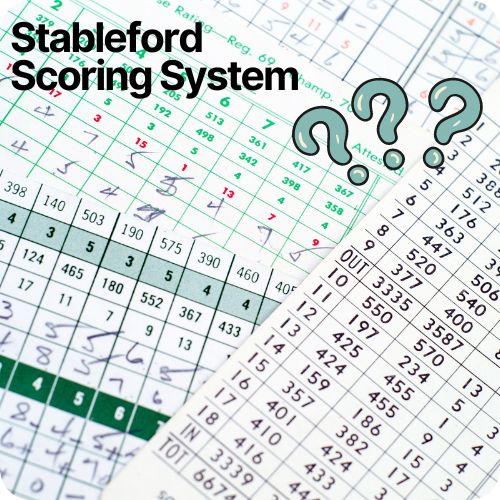How To Read Greens: 7 Tips To Master This Skill

Learning how to read greens is a skill that can reduce your score. Putting is one of the most challenging aspects of golf, and obviously, it is one of the most important.
You need to practice hundreds and hundreds of putts in order to really master the skill of reading the greens.
Even then, you’ll still have days where things just don’t come together for you on the putting green.
Look at Tiger Woods in the 2022 Masters Tournament at Augusta. The greatest golfer to ever live had his tournament ruined all because of his putting that day.
7 Steps To Read Greens Effectively

While mastering how to read greens isn’t the only thing needed to reach milestones like breaking 100 in golf, it is an important step to improving your game.
Let’s dive in and go over the 7 steps needed to learn how to read the putting green. You’ll be a putt above the rest before long!
Note: If you are just starting or only play a few times per year, there are other things that you can do to have a greater effect on improving your game than working on reading the green.
1. Study the Green As You Approach
The first thing you want to do in your process of reading the green is to start before you step foot on the putting green. As you walk up to the hole (or ride in a cart) you should be taking note of how the green looks from a distance.
Sometimes it is much easier to see how the green flows from a distance.
We always start by looking around the green to find the highest and lowest points. There is a good chance that the green will flow with the rest of the land around it.
By starting to read the green before you get to it, you are setting up your brain to think about what the putt will look like.
2. Walk The Putt

The next step to reading the green effectively is to walk the putt.
Many golfers like to get low to the ground and try and read the putt as soon as they stop foot on the green. I actually do that last to confirm my initial thoughts.
Walking the putt is way more effective in my experience for two main reasons:
- You get to feel the undulations of the green below your feet.
- You can pace out the distance to get an accurate measure of the power you will need behind the putt.
Have you ever had those putts where you swear the green was breaking one way, but when you made the putt it went the other way?
By walking the putt, you can feel how the green is moving below your feet. It is much easier to say “Oh right, I feel my foot dropping to the left here.” By really feeling the green, it is much less likely that you will have those moments.
Finding Distance
When you are walking the putt, count out how many paces are between your ball and the hole. What’s the use of having an accurate read on the putt but mess up the power?
The more you putt, and the better you get at figuring out distances on the green, the better you will get at understanding how much power should be behind your putt.
You can say “This putt is 4 paces” and you will remember how much power you should put behind the putt.
3. Find The Slope Using The Water Method
This may be a step you might not find in other guides on how to read the green. It involves a little bit of imagination but I promise once you understand it you’ll never be putting the same again.
The third step to reading the greens is to imagine you’re filling up the cup with water. That water overflows from the cup and flows across the green.
Imagine where that water goes on the putting green. This will show you which way the green is flowing.
I know it may sound weird and kind of awkward, but these little brain hacks allow you to think about the game a little differently, which may help.
4. Pick Your Middle point
You may have heard the phrase: Every putt is a straight putt.
While not technically true, you should think about every putt like this. Step four is to find a middle point in your putt.
You will find this after you read the green and get a rough draft in your head of the path your golf ball will move along.
Find the middle point in this path. This will be the point where you putt. Remember, every putt is a straight putt, meaning you’re going to putt straight at this point and let the undulations of the golf green move the ball right into the hole.
You can use any little bumps in the grass or maybe a small leaf to indicate the middle part of your putt.
5. Read The Grain

Reading the grain on the putting green may sound advanced but it’s much easier than you might think. Grain in a putting green is usually caused by how they mow the green.
You want to start by seeing if there are any changes in the color of the grass. Walk around the green to find which way the grain is flowing in relation to your golf ball.
With The Grain
If the grass is lying in the same direction as where your putt is going, your putt is down grain. This is usually indicated by a lighter or shiny color in the grass.
Being down grain means your putt is going to be faster than normal, so hit the ball lighter than normal.
Against The Grain
If the grass is lying in the opposite direction your putt is going (or toward the golf ball), this means the green is up grain, or against the grain.
This is usually indicated by the grass being darker or more dull. Putting against the grain will slow down your putt, so you need to hit the ball a bit harder than normal.
This can be especially difficult if you’re putting downhill as well.
You should always remember that gravity overpowers the grain every time.
Reading the grain is sort of a nuanced practice, and should only be taken into account when your putting as reached a level where it makes sense.
6. Learn from Others
Playing with friends is not only more fun than golfing solo, it can also improve your ability to read the green.
You see this a lot in golf majors, where the first person to putt the green gives the rest of the field a read on the putt.
This is especially true for you! By watching how your partner’s putt rolls, you can effectively get a live view of how your golf ball will roll too.
One tip that I want to include here is to follow all of the steps we had outlined in the beginning. Try to see if you can read the green yourself first.
This will give you some great practice without the pressure of using your own ball to confirm if you did it right.
7. Break Up Long Putts
Long putts can be brutal. I remember golfing at a course and it seemed like the putting green took up half the fairway!
Just looking at how big the greens are at St. Andrews gives a good idea of the long type of putts we are talking about.
Longer putts make reading the green extremely challenging since so much can change between your ball and the hole.
When we first started golfing we would just give long putts it our best guess, putt and pray it gets somewhere close.
We later learned there is really no reason to treat a putt this way.
Just break long putts into two or three sections. Our general rule of thumb is if a putt is over 10 paces, break it up.
Read the putts just like you would normally, and pick your middle point for each section. It takes some practice, but what doesn’t!
Extra Tips
If you managed to get this far, we want to let you know that those steps are the most important things you need to follow to read the putting green with great effect.
These other tips are generally helpful but not necessary!
Use A Forgiving Putter
Using a forgiving putter can be especially helpful for those longer putts where one each can turn into a foot by the end of the putt.
Take Your Time
Getting out early in the morning or later in the evening can give you more time to read the green. Take your time when you get to the green, one misread putt can ruin your whole score for that hole!
Don’t Overthink It!
Have you ever taken a test and changed your answer at the last second, only to find out you had it right the first time? That can happen a lot in golf. Especially when it comes to putting. Usually, your first instinct is right.
Final Thoughts on Reading The Green
Following these 7 tips will surely help improve your short game. A lot of factors go into how easy it is to read one green over another.
The type of grass or how well the course is maintained makes a big difference here. Remember to have fun and not take it too seriously!
It’s just a game at the end of the day, and just because you didn’t read one putt right doesn’t mean you won’t read the next one. Get into a putting routine and step over that ball with confidence.






